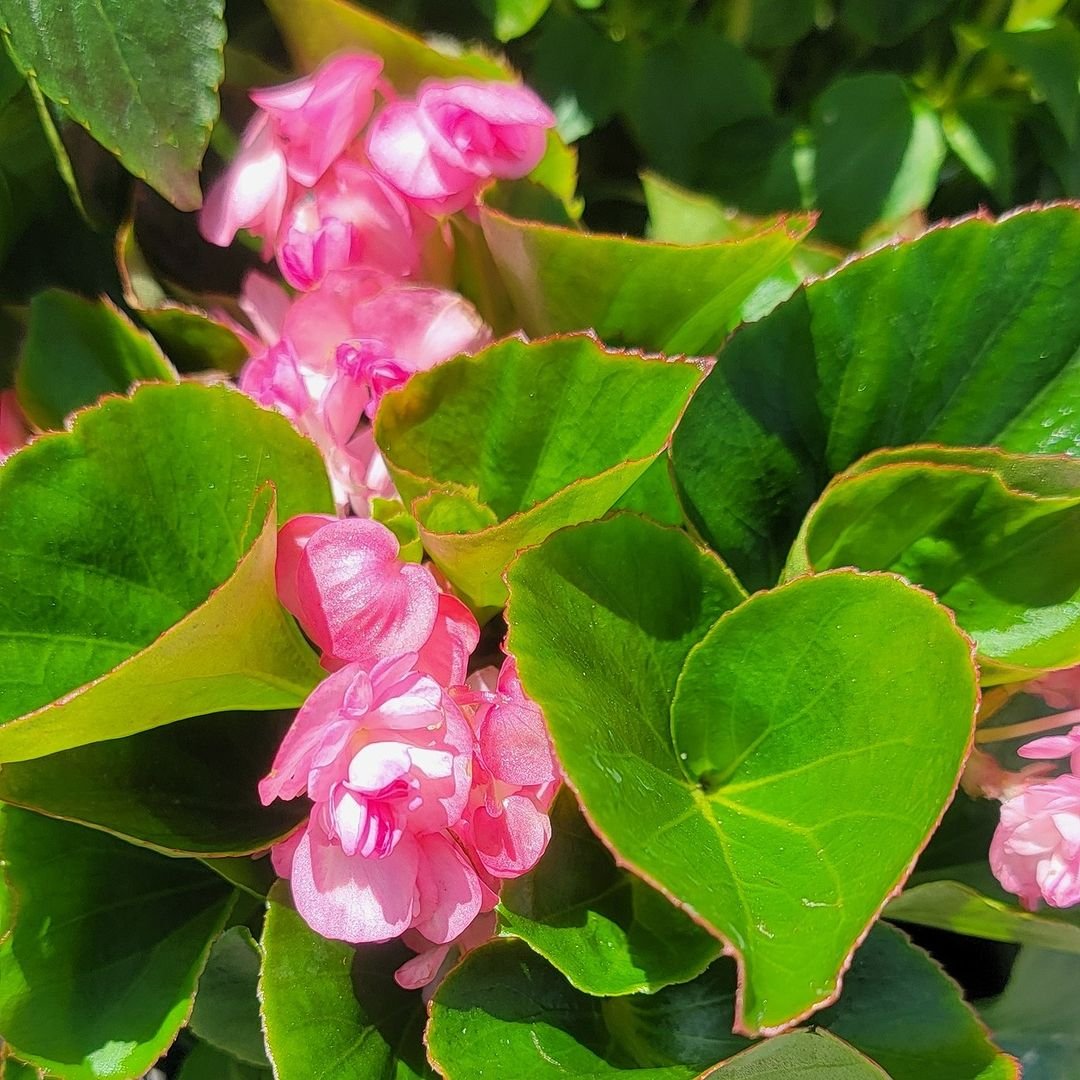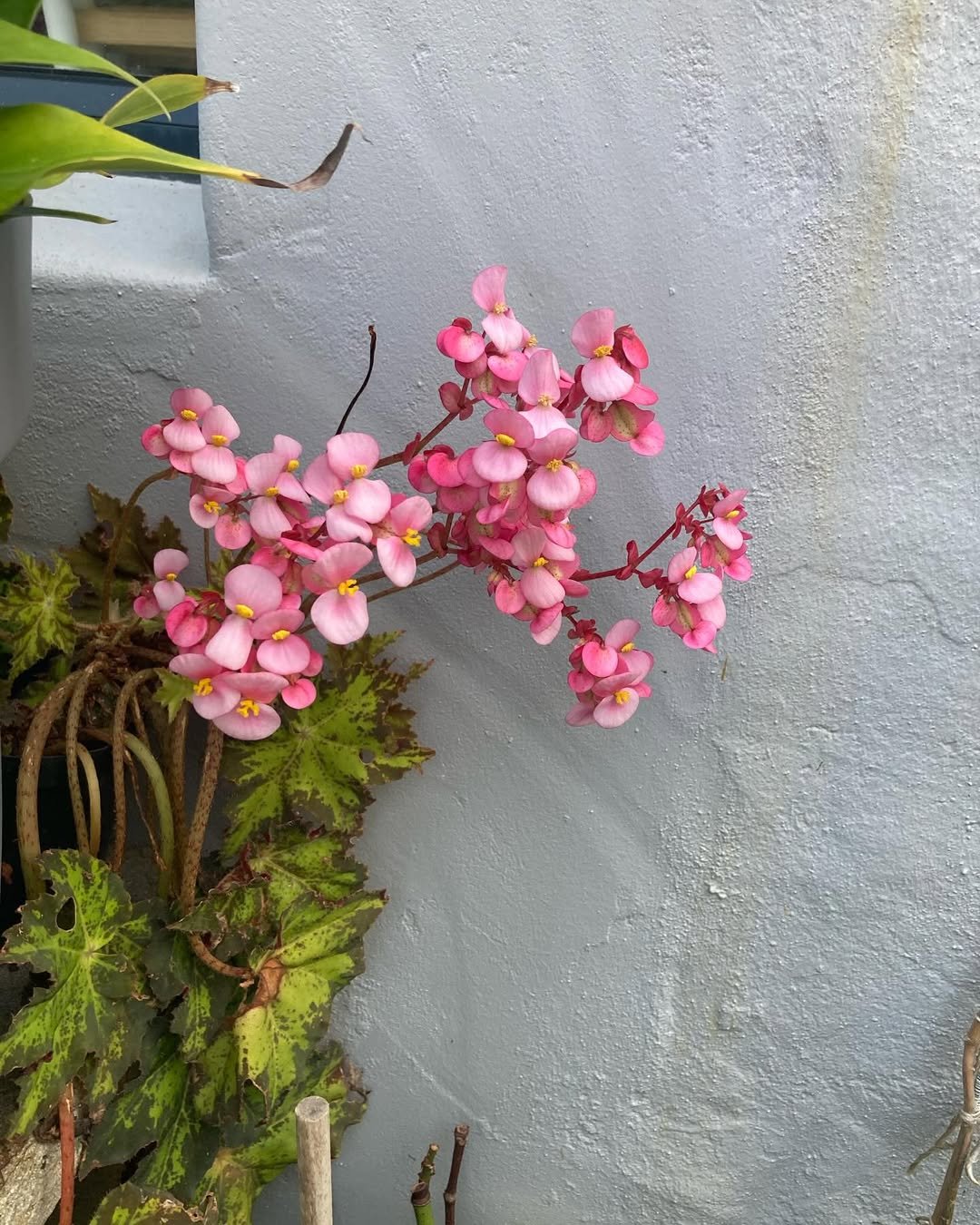Explore begonia flowers with expert tips on care, types, and more. Learn why they’re turning brown, if they’re edible, and how to grow them in the USA!

Hi there, fellow gardening enthusiasts! I’m Ashley Scott, and with 10 years of gardening experience under my belt, I’m thrilled to dive into one of my favorite topics: begonia flowers. Whether you’re a seasoned gardener or just starting out, begonias are a fantastic way to add color and charm to your garden or home. In this guide, I’ll answer all your burning questions about begonia flowers, from how to grow them to what they symbolize, all while sharing tips I’ve picked up over the years.
Begonias are versatile, vibrant, and surprisingly easy to care for once you know the basics. So, grab a cup of coffee, settle in, and let’s explore everything you need to know about these stunning plants!
What Are Begonia Flowers?

Begonia flowers come from a huge family of plants—over 1,800 species, to be exact! Their scientific name is Begonia, and they belong to the Begoniaceae family. Known for their colorful blooms and unique leaves, begonias are a go-to for gardeners across the USA. You can grow them indoors as houseplants or outside in your garden, depending on the type.
What I love most about begonias is their variety. Some, like wax begonias, have clusters of small, cheerful flowers, while others, like begonia rex, are all about those eye-catching leaves. Whether you’re after a pop of pink, red, white, or even yellow, there’s a begonia for you.
Types of Begonia Flowers
With so many begonias out there, where do you start? Here are some of the most popular types I’ve grown and loved over the years:
Wax Begonias (Begonia semperflorens)
Wax begonias are my go-to recommendation for beginners. They’re compact, tough, and bloom with waxy flowers in red, pink, or white. Their glossy green or bronze leaves make them perfect for borders or pots. I’ve used them to line my walkway, and they never fail to impress.
Begonia Rex (Rex Begonia)
Rex begonias are the divas of the begonia world. Their leaves steal the show with wild patterns and colors—think silver, purple, or red swirls. The flowers are small, but honestly, you won’t care. These are great indoors near a window or in shady spots outside.
Angel Wing Begonias (Begonia coccinea)
Named for their wing-shaped leaves, angel wing begonias grow tall and produce clusters of delicate flowers. I’ve got one in a big container on my patio, and its red blooms add such a nice height to the space.
Tuberous Begonias (Begonia tuberhybrida)
If you want big, bold flowers—like, dinner-plate-sized bold—tuberous begonias are your pick. They come in orange, yellow, and even double-flowered varieties. I’ve hung them in baskets, and they’re always a conversation starter.
Other Favorites
- Polka Dot Begonia (Begonia maculata): Spotted leaves and white flowers—super trendy!
- Strawberry Begonia (Saxifraga stolonifera): Not a true begonia, but its cute, trailing habit makes it a fun addition.
Each type has its own vibe, so pick one that matches your style and space.
How to Care for Begonia Plants
Caring for begonias isn’t rocket science, but it does take a little know-how. Here’s what I’ve learned works best:
Light Requirements
Begonias love bright, indirect light. Too much sun burns their leaves—trust me, I learned that the hard way with a rex begonia once. Too little light, and they get leggy. Indoors, I keep mine near an east-facing window; outside, partial shade is perfect.
Watering
Here’s a biggie: don’t overwater! Begonias like moist soil, but soggy roots spell trouble. Let the top inch dry out between waterings. For my tuberous begonias, I cut back in fall when they start resting.
Soil and Fertilizer
Well-draining, slightly acidic soil is key. I mix peat moss, perlite, and a bit of compost. Feed them every 4-6 weeks with a balanced fertilizer during spring and summer—nothing fancy, just consistent.
Humidity and Temperature
Begonias thrive in humid spots. In my dry Colorado winters, I use a pebble tray with water under the pots. They prefer 60-75°F, so keep them away from chilly drafts.
Propagation
Propagating begonias is a blast! I’ve had success with leaf cuttings and splitting tubers. It’s a cheap way to grow your collection—check out my tips in our Plant Propagation Guide.
For more detailed care advice, I recommend the University of Minnesota’s Begonia Guide.
Why Are My Begonia Flowers Turning Brown?
Ever wondered, “Why are my begonia flowers turning brown?” I’ve been there! Here are the usual suspects and fixes:
- Overwatering: Soggy soil is a killer. Check drainage and ease up on the watering can.
- Low Humidity: Dry air browns edges. Mist them or use a humidifier.
- Pests: Aphids or spider mites might be sneaking around—inspect and treat with soap spray.
- Fungus: Poor air flow can lead to rot. Keep leaves dry when watering.
Last summer, my angel wing begonia’s flowers browned, and it was all about too much water. Adjusted my routine, and it bounced back!
Begonia Flower Meaning and Symbolism
Begonias aren’t just pretty—they’ve got stories to tell. Here’s what they symbolize:
- Caution: In old flower language, they warned of danger or trouble.
- Gratitude: They’re also a sweet way to say “thanks.”
- Uniqueness: Their wild variety screams individuality.
Some say begonias bring wealth or balance, too. I gave a wax begonia to a friend as a thank-you gift, and she loved the sentiment behind it.
Are Begonia Flowers Edible?
Can you eat begonia flowers? Yes, but hold on! Some, like tuberous begonia blooms, are edible with a tangy, lemony kick—great in salads. But not all are safe, and the leaves or stems can be toxic. I’ve tried a few petals (pesticide-free, of course), and they’re a fun garnish. If you’re curious, start small and double-check your variety.
Learn more about edible blooms at Garden Design’s Edible Flowers Guide.
Begonia Flowers in Tattoos and Art
Begonias pop up in art and tattoos all the time. Their bold leaves and flowers symbolize beauty, resilience, and creativity. I’ve seen a polka dot begonia tattoo that was jaw-dropping—those spots really stand out on skin!
Begonia Flower Season in the USA
When do begonias bloom in the USA? It depends on where you are:
- Spring: Start tuberous begonias indoors around February, then plant wax begonias out after frost.
- Summer: Peak bloom time—my garden’s full of color then!
- Fall: Tuberous types slow down; bring pots inside before frost.
- Winter: Store tubers or keep indoor begonias cozy and bright.
For seasonal tips, see our Seasonal Gardening Guide.
Are Begonia Flowers Poisonous to Dogs?
Pet owners, listen up: yes, begonias are toxic to dogs and cats. They’ve got calcium oxalates that can cause mouth irritation, vomiting, or worse if eaten. My pup once sniffed a begonia too closely, so now I keep them high up. Check the ASPCA’s Toxic Plants List for safer options.
Do Deer Eat Begonia Flowers?
Good news for rural gardeners: deer usually skip begonias. They’re not a favorite snack, though hungry deer might nibble if options are slim. I’ve never had an issue in my yard, even with deer around.
Fun Facts About Begonia Flowers
Let’s wrap up with some cool trivia:
- Named after Michel Bégon, a French botany buff.
- Some species have leaves over 3 feet long!
- Begonias can bloom all year with the right care—I’ve got a rex going strong indoors now.
- They’re North Korea’s national flower.
For more begonia info, visit Missouri Botanical Garden.
Conclusion
Begonias have won my heart with their beauty and versatility. From wax begonias lining my paths to rex begonias brightening my home, they’re a joy to grow. I hope this guide helps you fall in love with them too. Got questions or begonia tales? Drop them below—I’d love to chat!
Happy gardening!







One comment on “Begonia Flowers: A Complete Guide to Growing and Caring for These Beautiful Blooms”